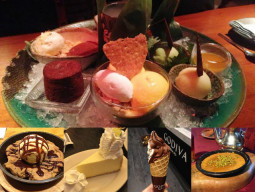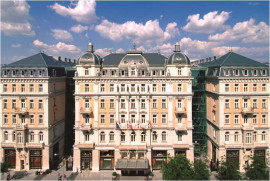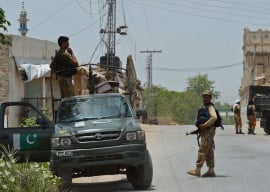
A city of vivacious cultural backgrounds, Amritsar is also remembered for the tragic Jallianwala Bagh massacre that became a watershed in the struggle for freedom. The memorial site and garden are just around the corner from the temple.
Lahore is the closest city to Amritsar, which lies approximately 50 kilometres from the Wagah border. Right from the start of our journey towards the city in Indian Punjab, we were alerted by the seriousness with which polio is taken in India. Medical officers were present with vaccines and we were only allowed to pass once thorough scrutiny was complete.
Travel diaries: You can check out any time you like but you can never leave

We were told more visitors throng to the Golden Temple than the Taj Mahal; over 100,000 people move in and out of the temple gates every week. It is mandatory for every visitor, regardless of age or sex, to cover their head as a sign of respect for the sanctity of the place. After crossing the main entrance, we took off the shoes and deposited them at a counter.
Before we walked towards the main complex, our feet were washed with water to maintain the purity of the gurdwara. The place welcomes anyone and everyone with open arms; however, one must follow the set guidelines. Eating meat and smoking is prohibited inside the premises. Headscarves are available for cheap at the shops nearby and if you are not able to buy one, the gurdwara management will provide you one for free.
From the elevated entrance of the main complex, we descended down the green carpeted staircase. There was the temple building, shining in full glory; seeing the reflection of its gold-plated walls in the pool water was quite an experience. The gurdwara is located right in the middle of the pool and a walkway leads towards its entrance.
The Golden Temple has seen many phases of history. Construction of the water tank and the town around it was started around 1570 and completed within seven years. In December 1588, Guru Arjan initiated the construction of the gurdwara in the middle of the water tank. He had requested Muslim saint Saeen Hazrat Mian Mir to lay the foundation stone of the temple, which the latter accepted and the stone was laid on December 28, 1588. By 1604, the construction was complete.
Travel diaries: 10 mouth-watering desserts you must try in Dubai
Golden Temple houses the Adi Granth, which is a holy Sikh scripture that comprises compositions and compilations of Sikh Gurus and other saints, including some works of Muslim sufi Baba Farid.
In the mid-18th century it was attacked by one of Ahmed Shah Abdali’s generals, Jahan Khan, and had to be rebuilt in the 1760s.
The existing building of Gurdwara was rebuilt in 1764 by Jassa Singh Ahluwalia with the help of other Sikh Misls (sovereign Sikh states of Punjab region during 18th century). In the early 19th century, Maharaja Ranjit Singh covered the upper floors of the temple with gold, giving it its distinctive appearance and English name. The gold plating on the walls was finished in 1830.

After Partition, the Golden Temple was once again attacked during the Indian Army’s Operation Blue Star between June 3 and 6 in 1984. Troops, led by General Kuldip Singh Brar, willingly brought infantry, artillery and tanks into the complex to end the Sikh revolt for Khalistan movement. Fierce fighting ensued and thousands died. The complex also suffered damage during the attack, especially the holy Akal Takht (throne of the timeless one) which is one of five Takhts (seats of power) of the Sikh faith. This operation became the motivation of two Sikh guards, who killed the (to date) only female Indian prime minister Indira Gandhi in revenge of the operation.
While moving towards the causeway of the temple, I noticed that due to whitewashing and repairs, the walls of Akal Takht bore no scars of these wounds of history. In 1986, repairs performed by the Rajiv Gandhi government were removed. A new Akal Takht was completed in 1999 by Kar Sevaks (volunteers).
Just before entering the temple, we were given halwa. Surprisingly, the distribution of free food was quite organised.
It is pertinent to note that the Golden Temple houses one of the largest free community kitchens in the world, catering to thousands of people on average, every day. The meal consists of flat bread and lentil soup. From the causeway we went inside the temple in a slowly-moving queue, silently observing the rituals that were being performed by the devotees. Right in the middle of the temple, holy texts were being read out and people were listening with attention. Some of them were praying and some of them were kneeling down, gestures were different but the purpose was the same.
The writer is a Lahore-based photojournalist and a travel writer. He tweets @vasiq_eqbal
Published in The Express Tribune, June 12th, 2016.
Like Life & Style on Facebook, follow @ETLifeandStyle on Twitter for the latest in fashion, gossip and entertainment.



















1713889672-1/Plastic-waste-(2)1713889672-1-270x192.webp)

















COMMENTS (2)
Comments are moderated and generally will be posted if they are on-topic and not abusive.
For more information, please see our Comments FAQ